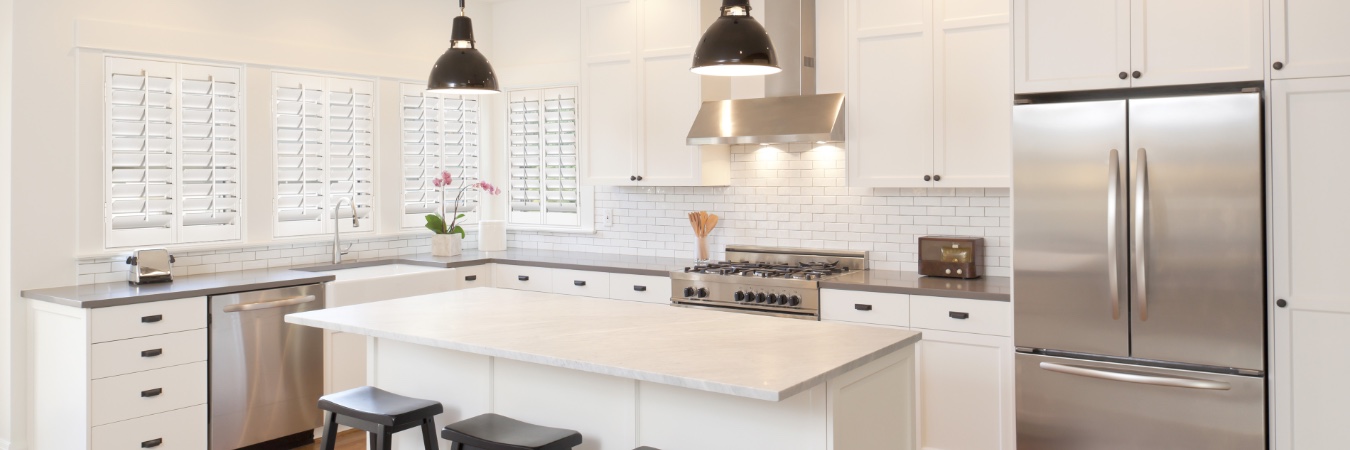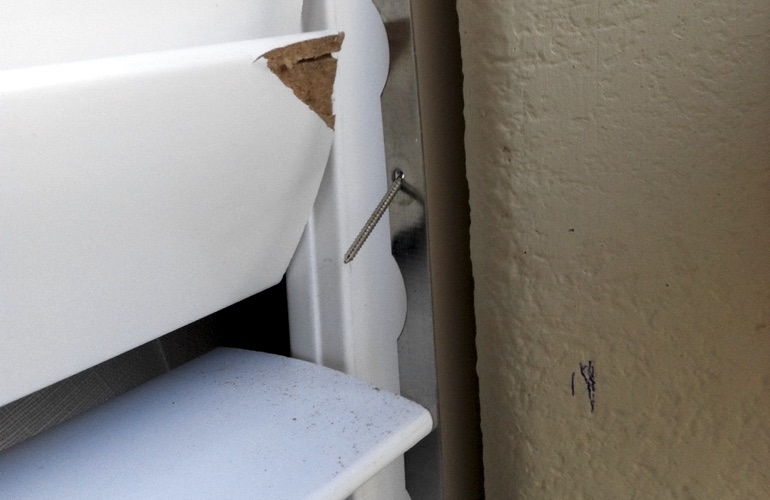
3 Ways Polywood Shutters Are A Better Choice Than Hollow Vinyl And Composite Shutters In Washington DC
December 15, 2015
Plantation shutters in Washington DC come with different options. And when you are figuring out which non-wood shutter is best for you, it might be hard to discern the differences. You can pick the wrong type without knowing and find yourself investing in low quality shutters. Wondering if Polywood® shutters - our best-selling solid polymer shutters - are a better value than hollow vinyl or MDF (multi-density fiberboard) shutters? Here are three ways Polywood shutters are a better choice than composite shutters in Washington DC to help you decide.
1. Polywood vs Composite Shutters Durability
Polywood shutters are constructed from a top grade solid polymer that leads to the most color-retention, durability, and rigidity than any other shutter available. This means the shutter louvers will not chip over time. On the other hand, composite shutters are built from a pressed-board core, encapsulated in poly-vinyl. The vinyl enveloping the pressed board is likely to peel off from the core element readily. And this peeling is expedited in hot, humid, and wet environments. Another option for non-wood shutters is hollow vinyl. But they deteriorate the fastest due to the substance.
Both types of non-wood shutters are susceptible to deterioration and warping when you consider all the climate conditions in Washington DC. Polywood is manufactured with UV inhibitors that divert heat. And with heat being the leading problem in cracking the shutter louvers, Polywood is absolutely the highest quality plantation shutter for your home.
2. Polywood vs Composite Shutters Color Fastness
Polywood shutters colors include three exceptional white paints. We bake the paint finishes on each element at temperatures hotter than it will ever get in Washington DC. The patented finishing process includes UV inhibitors to make sure the color never fades.
Other types of non-wood shutters finishes are limited to no or low quality paint finish. In a lot of cases, the vinyl wrap is the color you end up with. Yes, this finish appears to be adequate at first. But it fades with time. And when it comes to hollow vinyls, some are painted. With the vinyl being a heat conductor, this seriously influences the finish day after day.
3. Polywood vs Composite Shutters Energy Efficiency
Third party testing shows that Polywood shutters insulate against 30° of temperature and result in a reduction of heat transfer by up to 45%. This means that Polywood insulates up to 70% better than the top solid wood shutter.
These insulating properties are due to the solid polymer material Polywood shutters are made from. But what makes Polywood even more energy efficient than composite shutters is the weatherstripping on the louvers and panels. All you have to do is interlock the pieces of weatherstripping as you close the panels to get a very tight seal against the effects of the weather outside. No composite shutter can offer the energy savings that Polywood does.
The Sunburst Team In Vegas Puts The Durability Of Polywood Shutters To The Test
In 2004, Sunburst Shutters Las Vegas had Polywood shutters anchored to the sides of their trucks as part of the graphics. The trucks were parked outside and saw the natural elements Vegas is infamous for. That means extreme heat for more than five months a year!
The plantation shutters had been on our vehicles for almost 7 years at that point. Our team organized an investigation to see how effective Polywood is in retaining the original paint color. We wiped the Polywood shutter that was on the truck clean. And we compared it side by side to a new Polywood. The color was the same. We didn’t see any discoloration or fading. It was further validation for us that our paint finish is indeed the best around!
And knowing that Polywood can handle so much heat and abuse travelling on a truck for more than 7 years, it’s hands-down the most durable shutter for your home in Washington DC.
-1.jpg)

